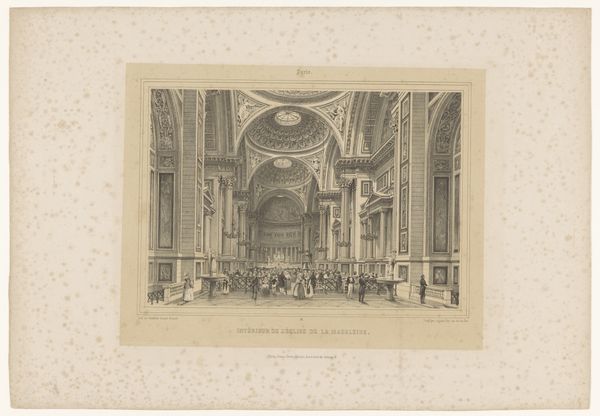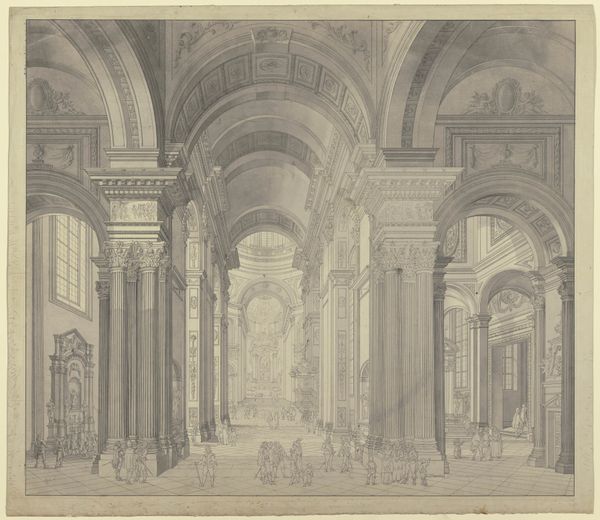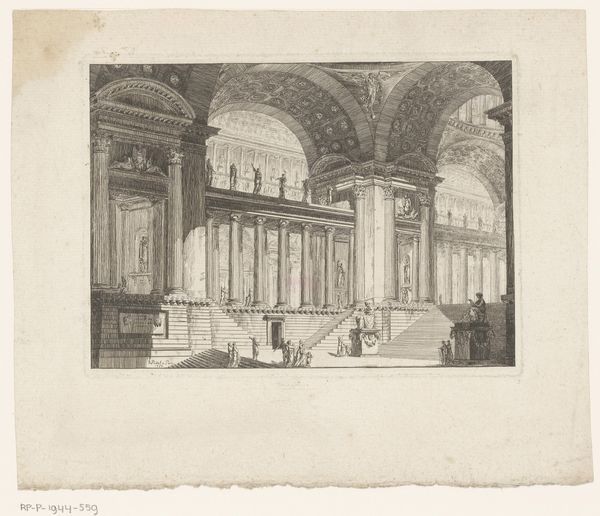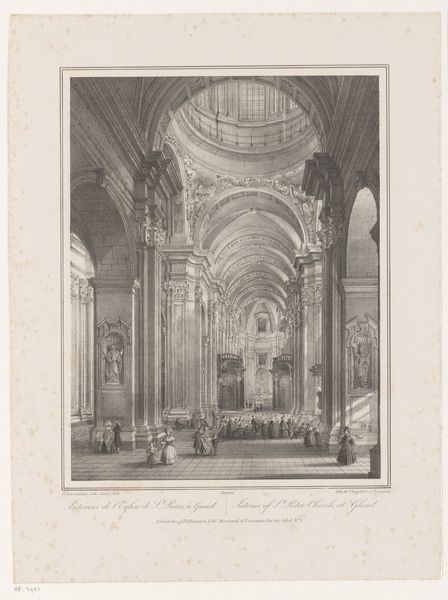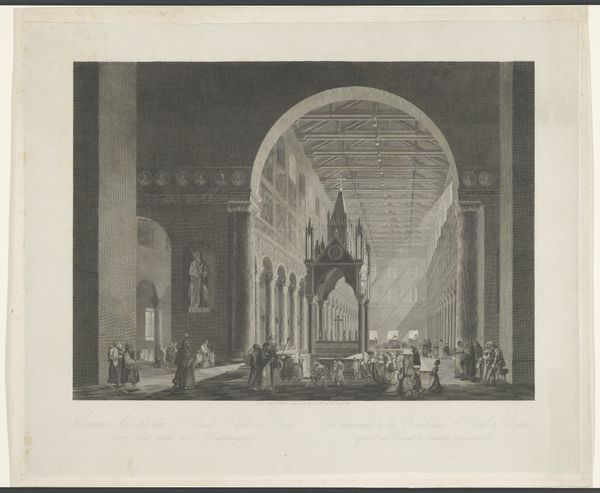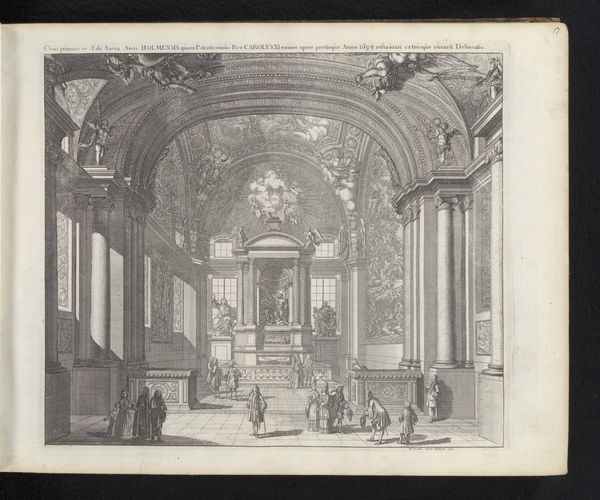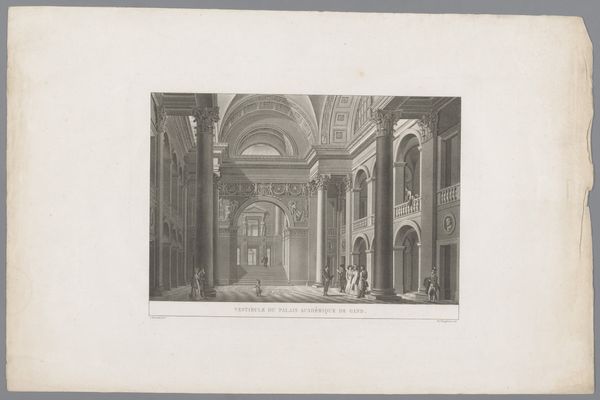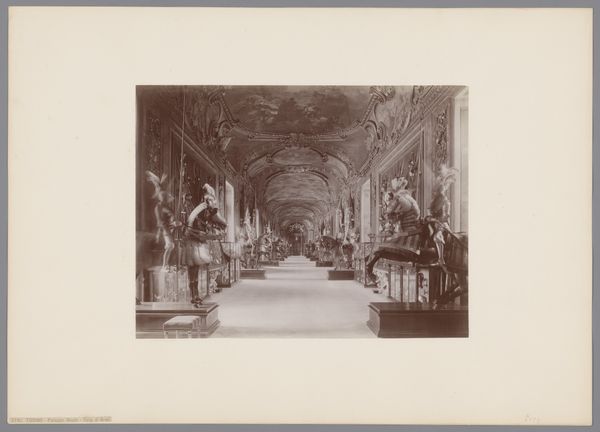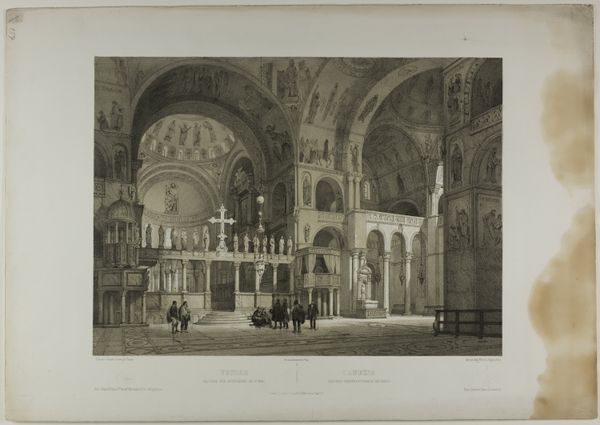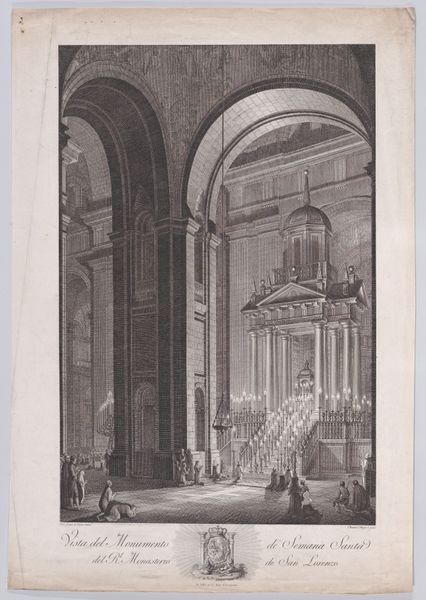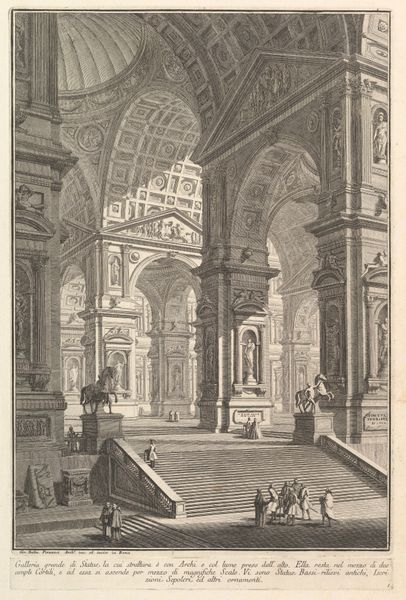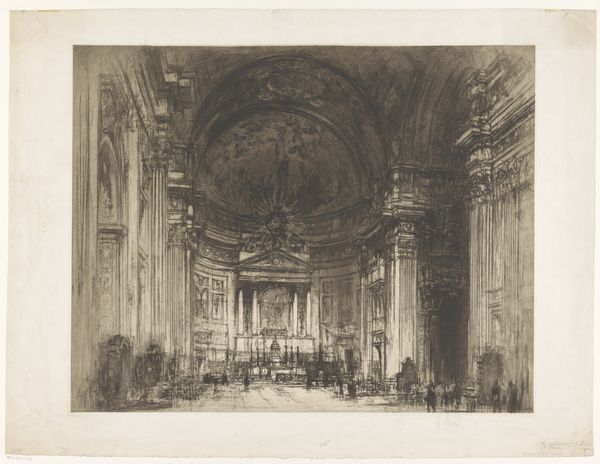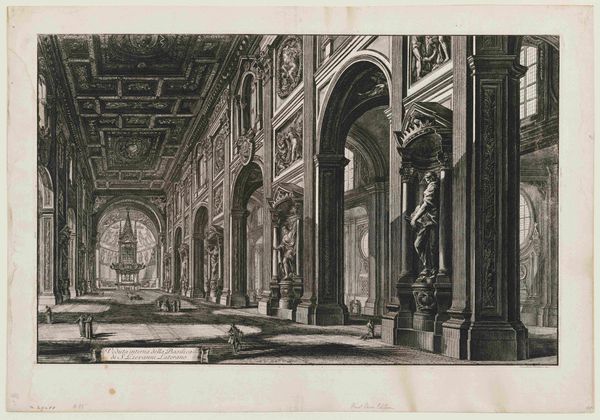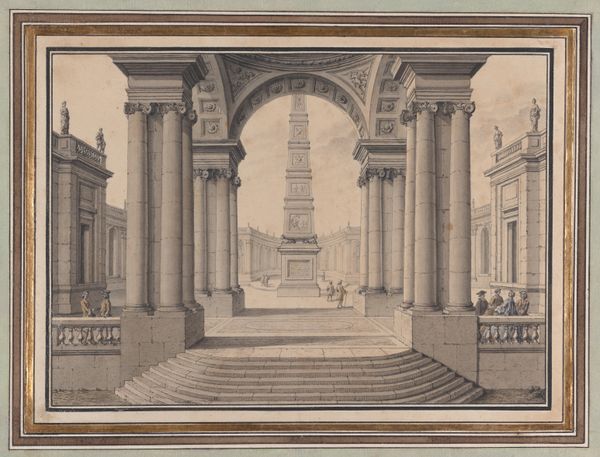
Zicht op het baldakijn van Bernini in de Sint-Pietersbasiliek in Rome 1837 - 1845
0:00
0:00
print, engraving, architecture
#
neoclacissism
# print
#
landscape
#
cityscape
#
engraving
#
architecture
Dimensions: height 399 mm, width 567 mm
Copyright: Rijks Museum: Open Domain
Curator: This engraving by Adrien Dauzats, created between 1837 and 1845, offers us a view of Bernini's baldachin within St. Peter's Basilica in Rome. Editor: The scale is just breathtaking. Even in this monochrome print, I can feel the immense space, and the weight of the architecture. The baldachin dominates, doesn’t it? Curator: Absolutely. What I find compelling is the way Dauzats situates this icon of the Catholic Church within the social and political context of 19th-century Europe, during the resurgence of Neoclassicism. Editor: The labor that went into constructing this, both Bernini's baldachin, and Dauzat's rendering. Imagine the copperplate engraving itself, replicating that ornamentation. The material translation is stunning. Curator: The engraving almost elevates the architecture to a symbol of power and perhaps even, hegemony, considering its place within the Vatican. This period also saw many people questioning faith, its very material foundations as such were put into scrutiny. Editor: Exactly. Think about where the materials to build it come from, and where Dauzats sources the materials needed for the engraving; the physical act of creating art or architecture has consequences in and outside artistic creation. It prompts a discussion on value, consumption, and labor within the church and society itself. Curator: And how architecture impacts social movements by fostering community gatherings but is in its intrinsic nature exclusionary to marginalized people and belief. It opens discussions about accessibility and equal spaces. Editor: Thinking about its context and composition helps re-center that relationship. Bernini created his altar for the pope in the 1600s while the Church struggles and survives plague, conflict and constant reinvention. Curator: Seeing how art and power intersect like this continues to teach us a lot, doesn’t it? It enables us to look at institutions with a wider scope while studying the very definition of art. Editor: It does make you appreciate the physical act of creation. The labor of Dauzats bringing us this immense vision, it prompts a respect for what is tangible and how deeply materials shape and reflect broader narratives.
Comments
No comments
Be the first to comment and join the conversation on the ultimate creative platform.
